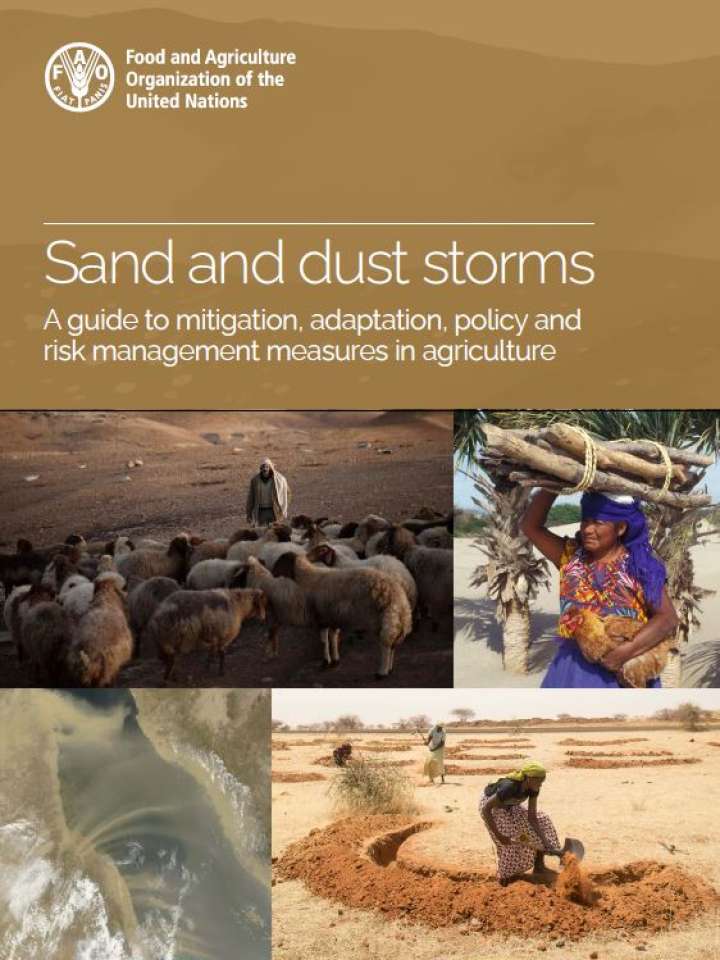Sand and dust storms: A guide to mitigation, adaptation, policy and risk management measures in agriculture
This guide aims to provide an overview of sand and dust storms and the impacts on agriculture and food systems. It gives a review of how agriculture can create sand and dust storms (SDS) sources and highlights the impacts of SDS on agricultural production in source and deposition areas. SDS are common in drylands with dust often transported over great distances, frequently across international boundaries. Such storms are important for ecosystem functioning, but they also create numerous hazards to society, in agriculture and other socioeconomic sectors. While agriculture is a major driver of SDS, agriculture is impacted by SDS and it is also part of the solution to combat SDS risks and mitigate their impacts.
It includes a range of high-impact, location- and context-specific practices to reduce SDS source and impacts on agriculture subsectors at local level, comprising technical and non-technical interventions. Moreover, it assesses how SDS risk is addressed at the policy level and discusses options for integrating SDS at national and regional levels into multi-hazard disaster risk reduction (DRR) and disaster risk management (DRM) strategies or sectoral development programmes, followed by conclusions and recommendations:
- Up-to-date scientific information is needed to identify and monitor specific high-risk SDS source areas and their agricultural systems before selecting the appropriate good practices to reduce SDS sources and adverse impacts.
- Large-scale application of SDS source and impact mitigation practices requires enhanced and integrated legislation and enabling policies, institutional capacities and adequate financial resources that facilitate implementation of these actions on the ground.
- Strengthening SDS information and analysis should include the development of SDS risk monitoring and early warning systems that allow timely alerts and early warnings to be issues through various communication channels.
Explore further
